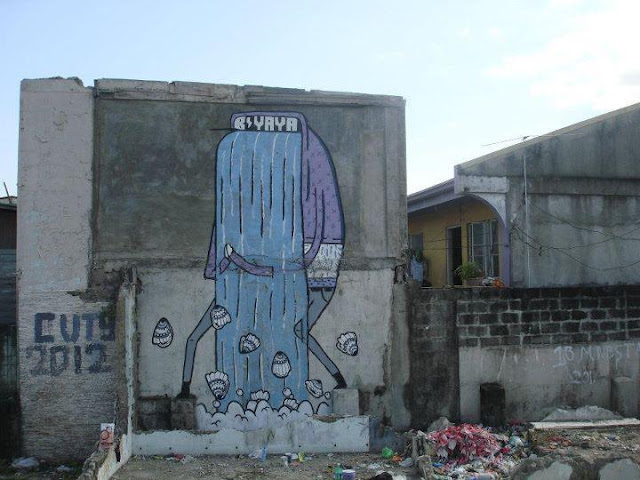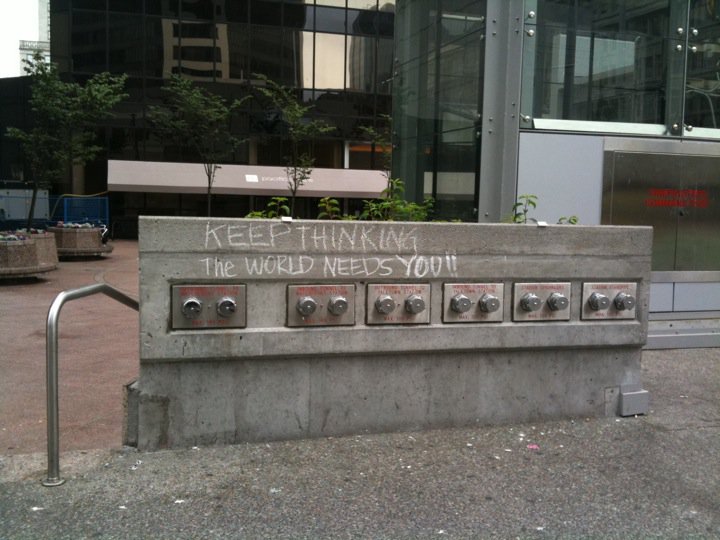Biyaya in English translates to blessing and the work was done by BLIC x CHESHIRE in Kawit, Cavite in the Philippines. As a province, Cavite’s motto is “be a part of the revolution”, which solidifies its historical role as being the place where the Philippines declared its independence from Spain in June 12 1898. According to Durmuller, graffiti functions as a “written cultural phenomena, making use of both symbolic and iconic language” (1988), by looking at this interpretation Biyaya celebrates the hardworking people of Kawit that makes a living by gathering clams, but the positioning of the work in a trash dump symbolizes the people’s disregard of the environment and way of life. The figure in the work is projected as both praying and crying, polarizing the irony that is experienced by the people of Kawit.
In a country that has experienced more than three hundred and fifty years of Catholic-Castilian Spanish colonization, fifty years of being an American colony, and hegemonic control of the political Oligarchy, issues of agency, influence of ritual prayer, blessings from the divine, and ideas of who or what is divine are on-going discourses in the sociocultural framework of the Philippines. The importance of Biyaya’s placement in a public space is “it allows concerns and conflicts to be visible to all that pass-by, which encourages collaboration and potential participation in sociocultural discourses” (Rodriguez and Clair 3:1998). Maybe Biyaya can capture and bless the people that pass-by it and inject a little revolution in them.
Edsel Yu Chua 36172104
Bibiliography
Biyaya 2012 BLIC x CHESHIRE http://blog.streetkonect.com/2012/01/biyaya-blessing.html
Durmuller, Urs
1988 Sociolinguistic apects of mural sprayscapes (Graffiti). Sociolinguistics 17:1-16.
Rodriguez, Armando and Robin Patric Clair
1999 Graffiti as communication: Exploring the discursive tensions of anonymous texts. Southern Communication Journal 65(1): 1-15


